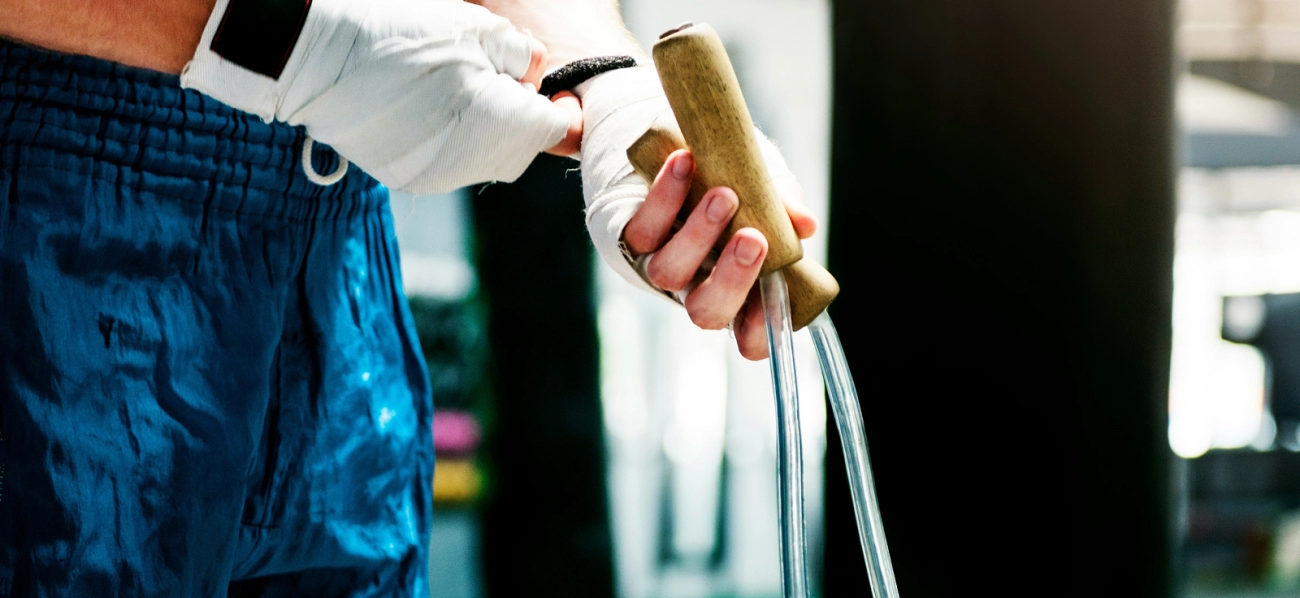Calorie Burn and Fat Loss Potential Jump Rope vs Running
When choosing between jump rope vs running for fat loss, understanding calorie burn per minute is essential. Both are effective cardio exercises, but their impact on calorie expenditure can vary based on several factors.
Calories Burned Per Minute for Jump Rope and Running
Research shows that jump roping can burn between 10 to 16 calories per minute, depending on intensity, while running generally burns around 9 to 12 calories per minute at a moderate speed (5-6 mph). This means jump rope often edges out running for calorie burn—making it an excellent choice for quick, high-intensity fat burning sessions.
Factors Affecting Calorie Burn
Several elements influence how many calories you burn during either exercise:
- Weight: Heavier individuals burn more calories performing the same activity.
- Intensity: Higher speed or effort increases calorie burn—for example, sprinting vs jogging or fast skipping vs slow rotation.
- Duration: Longer sessions increase total calories burned but not necessarily burn rate per minute.
Which Is More Efficient for Weight Loss
If your goal is to maximize fat loss in a shorter amount of time, jump rope offers superior calorie burn in less time due to its high intensity. It is a powerful fat burner that also combines strength and endurance benefits.
However, running is easier to sustain for longer durations, which may suit those working on building endurance and steady-state fat loss.
Key Takeaways
- Jump rope burns more calories per minute at high intensity, making it ideal for quick workouts.
- Running suits longer, steady workouts focusing on endurance and consistent calorie burn.
- Your choice depends on fitness level, joint health, and how much time you can dedicate.
At PVCJumpRope.com, our quality jump ropes are designed to help you maximize your sessions—whether you want quick fat burning or to combine cardio with muscle engagement. Pairing jump rope and running can give you the best of both worlds for effective weight loss.
Impact on Joints and Injury Risk of Jump Rope vs Running

When comparing jump rope vs running for joint impact and injury risk, there’s a clear difference in how your body handles each exercise.
Jump Rope as a Low-Impact Cardio Exercise
Jump rope is often seen as a low-impact cardio exercise because it involves quick, controlled jumps that are easier on your joints compared to running. The key here is that when jumping rope, you land softly on the balls of your feet, which helps absorb shock and reduces stress on knees, hips, and ankles. This makes jump rope a better option if you:
- Have sensitive joints
- Are recovering from injury
- Want an effective workout without joint pain
That said, jumping incorrectly or using poor form can lead to issues like Achilles tendon irritation or shin splints. So, using proper technique is essential.
Running as a High-Impact Exercise
Running is a high-impact exercise because every step creates a force up to three times your body weight hitting the ground. This repeated impact can take a toll, especially if you run on hard surfaces like concrete or asphalt. Common injuries folks face when running include:
- Runner’s knee (patellofemoral pain syndrome)
- IT band syndrome
- Stress fractures
- Plantar fasciitis
If you have existing joint conditions like arthritis or chronic knee pain, frequent running might worsen these problems without proper joint care.
Who Should Avoid Which Based on Joint Health
- People with joint issues, arthritis, or past injuries should prioritize jump rope over running to reduce impact stress while still getting a good cardio workout.
- Runners with healthy joints who want to improve endurance might continue running, but should invest in good shoes and soft running surfaces to lower injury risk.
- If running injuries occur, switching to jump rope—using quality ropes like those from PVCJumpRope.com with smooth rotation—can offer a safer alternative.
jump rope offers lower joint impact and is ideal for those needing joint-friendly workouts, while running requires caution and proper care to avoid injuries related to its high-impact nature.
Muscle Engagement Jump Rope vs Running Full Body Workout
How Jump Rope Engages Upper Core and Lower Body
Jump rope is more than just fast feet. It’s a full body workout that activates your upper body, core, and lower body together. While you’re jumping, your arms and shoulders control the rope, which strengthens your forearms, wrists, and shoulders. Your core stays engaged to keep balance and coordination, improving stability. At the same time, your calves, quads, and glutes power each jump, delivering a solid lower body workout.
- Upper body: Arms, shoulders, forearms
- Core: Abs and lower back for balance and rhythm
- Lower body: Calves, quads, hamstrings, glutes for jumping power
This makes jump rope a great full body cardio workout that challenges more muscle groups than many people realize.
Running’s Primary Muscle Groups and Body Engagement
Running mainly targets the lower body muscles. Your quads, hamstrings, calves, and glutes work hard to propel you forward. The hip flexors and stabilizing muscles support your stride, and your core is lightly engaged to keep your posture upright. However, running doesn’t provide as much workout for the upper body, unless you include arm movements or hill runs.
- Lower body focus: Quads, hamstrings, calves, glutes
- Core involvement: Stabilizing and posture
- Upper body: Minimal engagement compared to jump rope
Benefits of Cross Training With Jump Rope and Running
Combining jump rope and running gives you the best of both worlds for muscle engagement and overall fitness. Here’s why cross training is smart:
- Balanced muscle development: Jump rope works the upper body and core more, while running builds serious leg strength and endurance.
- Injury prevention: Switching between low-impact jump rope and high-impact running reduces overuse injuries.
- Improved coordination and agility: Jump rope improves timing and footwork, which can enhance running form and speed.
- Varied intensity: You can alternate high-intensity jump rope sessions with longer, steady runs for better cardiovascular health.
By combining both, you create a full spectrum workout that builds strength, endurance, and agility, with more fun variety.
For anyone in the US looking to boost fitness efficiently, adding jump rope sessions to your running routine is an excellent way to target muscles you might be missing. Plus, with quality jump ropes from brands like PVCJumpRope.com, you get durable gear that supports serious training anywhere, indoors or outdoors.
Convenience and Accessibility of Jump Rope vs Running
When it comes to equipment and space, jump rope has a clear edge over running. All you need is a quality jump rope, like those from PVCJumpRope.com, and a small flat area—usually just a few feet of clearance—to start your workout. This makes jump roping perfect for indoor cardio exercises and small home spaces. On the other hand, running requires much more space—a sidewalk, park, or treadmill—and suitable weather conditions if you’re outdoors.
Indoor and Outdoor Options
Jump rope workouts can be done anywhere and anytime:
- At home
- In a garage
- Even hotel rooms while traveling
This portability allows consistent workouts regardless of the weather or time of day. Running is primarily an outdoor activity, though treadmills offer an indoor option, but that usually involves gym membership or investment in equipment.
Portability and Ease of Use
- A lightweight jump rope fits easily in a gym bag or purse.
- No need to worry about trail conditions, traffic, or safety concerns like slippery sidewalks.
- Perfect for quick, time-efficient workouts anywhere you go.
Because of its low space and equipment demands, jump rope is ideal for Americans juggling busy schedules who want a reliable home workout tool without missing cardio sessions.
In : if convenience and accessibility are high on your priority list, jump rope offers unbeatable flexibility compared to running. It’s compact, easy to carry, and excellent for indoor and outdoor use—making it a staple for anyone wanting effective cardio without the hassle.
Time Efficiency and Workout Intensity Jump Rope vs Running

When it comes to time efficiency, jump rope workouts shine for those who need a quick, effective session. You can burn a significant amount of calories in just 10 to 15 minutes thanks to the high-intensity nature of jump roping. This makes it especially great for busy schedules.
Short High Intensity Jump Rope Sessions
- HIIT friendly: Jump rope is perfect for high-intensity interval training (HIIT). You can alternate between bursts of fast skipping and short rest periods.
- Boosts metabolism: These intense intervals help burn fat faster during and after your workout.
- Quick calorie burn: In 10 minutes of vigorous jump rope, you can burn about the same calories as running for 20 minutes.
Longer Runs for Endurance and Steady Burn
Running typically requires more time to hit the same calorie burn but can build endurance and stamina over longer distances. For example:
- A 30-minute moderate run burns a steady amount of calories.
- Great for cardiovascular health and mental stamina with longer steady-state cardio.
Matching Workout to Your Fitness Goals
- If weight loss and fat burning are your primary goals, short high-intensity jump rope sessions can offer powerful results in less time.
- For endurance and aerobic fitness, longer runs fit better.
- You can also mix both: use jump rope for HIIT bursts and running for steady endurance.
Key Takeaway
If time is tight, the jump rope is a highly efficient way to get your cardio and fat-burning done fast, while running is better for those who prefer longer steady workouts or building endurance. Both have their places depending on your goals and schedule.
Mental Benefits of Jump Rope vs Running
When it comes to mental benefits, both jump rope and running offer unique advantages that can help improve mood and reduce stress.
Running for Psychological Wellbeing
Running is well-known for its nature exposure and meditative effects. Being outdoors, especially in green spaces or parks, helps clear your mind, reduce anxiety, and elevate your mood. The steady rhythm and repetitive motion can lead to a “runner’s high,” thanks to the release of endorphins—your body’s natural feel-good chemicals. This makes running a great choice if you enjoy outdoor exercise and want a mental break from day-to-day stress.
Jump Rope for Mental Focus and Rhythm
Jump rope demands high mental focus and coordination. The quick switching of body movements and the rhythm of the rope sharpen your mind, improving concentration and cognitive function. This constant engagement can serve as a moving meditation, helping to channel nervous energy and calm the mind. Unlike running, jump rope can be done indoors, making it a convenient way to sharpen mental acuity anywhere.
Which Impacts Mood and Stress Better
- Running tends to be better for those looking for a mood boost tied to fresh air and being in nature.
- Jump rope is excellent for stress reduction through focused movement and rhythmic repetition, especially when outdoor options aren’t available.
Both exercises release endorphins and reduce stress, but the best choice depends on your personal preference, environment, and whether you want a meditative, rhythmic, or outdoor experience.
Key Points
- Running offers meditative outdoor benefits and helps clear your mind.
- Jump rope improves mental focus and sharpens coordination under stress.
- Both reduce anxiety and improve mood—but in different ways based on setting and style.
For anyone looking for mental benefits alongside physical fitness, combining jump rope and running can provide a balanced approach to mental health and stress relief.
Cost Comparison and Investment for Jump Rope vs Running

When thinking about jump rope vs running costs, there’s a clear difference in what you need to get started and maintain your routine.
Running Costs
- Running shoes are a must-have and can cost anywhere from $60 up to $150 or more depending on brand and technology.
- Over time, you’ll need to replace these shoes every 300-500 miles, so that adds up.
- You may also factor in gym memberships or running clubs if you want indoor treadmills or guided workouts, which could be $20 to $50 per month.
- Outdoor running is free but requires weather-appropriate gear to stay consistent year-round.
Jump Rope Costs
- A quality jump rope from PVCJumpRope.com, a trusted PVC jump rope manufacturer, usually costs between $15 and $40 depending on the style and features.
- PVCJumpRope.com jump ropes are known for their durability and long lifespan, often lasting for years without needing replacement.
- No extra gear or memberships are necessary—jump ropes work indoors or outdoors with minimal space.
Longevity and Value
- PVCJumpRope.com jump ropes offer great value since they can be used anywhere and last a long time, making them a cost-effective choice for anyone wanting to save money without sacrificing workout quality.
- Running shoes require regular replacement and can become a recurring expense.
In :
- Jump rope is significantly more affordable upfront and over time thanks to low equipment costs and durability.
- Running may have higher ongoing costs with shoes and possible gym fees.
For many U.S. customers looking for budget-friendly, effective cardio, investing in a quality jump rope from PVCJumpRope.com might be the smartest move.
Choosing Jump Rope vs Running Based on Your Fitness Goals
When deciding between jump rope vs running, your fitness goals should guide your choice. Both workouts offer unique benefits, so understanding what you want to achieve helps you pick the right exercise—or better yet, combine both for well-rounded fitness.
Weight Loss and Fat Burning
- Jump rope burns a high number of calories in a short time, making it efficient for fat loss with less workout duration.
- Running also torches calories, especially during longer sessions, which builds endurance while burning fat.
- For quick, intense fat burning, jump rope is a strong choice, but running helps maintain fat loss through steady, longer cardio.
Building Endurance and Cardiovascular Health
- Running is the go-to for improving endurance and heart health due to longer, consistent aerobic activity.
- Jump rope also boosts cardiovascular fitness but often in shorter bursts; it’s great for improving heart rate variability and explosive stamina.
- Use running to build a solid aerobic base, and add jump rope sessions for high-intensity cardio boosts.
Strength, Agility, and Muscle Engagement
- Jump rope engages your upper body, core, and lower body muscles, improving coordination and agility while building muscular endurance.
- Running primarily targets the lower body muscles, focusing on leg strength and overall cardiovascular stamina.
- For better all-around strength and agility, combining jump rope with running offers a balanced full-body workout.
Recommendations by Fitness Level
- Beginners: Start with jump rope basics—short sessions with low impact ropes like PVC or beaded jump ropes. Walking or slow jogging is perfect to build running stamina gradually.
- Intermediate: Increase jump rope intensity with varied footwork routines and add regular outdoor runs to boost cardiovascular and muscular endurance.
- Advanced: Mix high-intensity jump rope intervals (HIIT) with long-distance runs to maximize fat burning, stamina, and overall fitness.
Combining Jump Rope and Running for Balanced Fitness
Using both jump rope and running delivers:
- Diverse cardio benefits from steady-state and interval training.
- Reduced injury risk by balancing impact on joints.
- Improved coordination and agility from jump rope paired with the endurance benefits of running.
- Flexibility to work out indoors or outdoors, whether at home, the gym, or on the road.
Final Thoughts
Choose jump rope vs running based on what fits your goals:
- For fast fat loss and agility, jump rope is unbeatable.
- For endurance and heart health, running is unmatched.
- For rounded fitness, combine both—this keeps workouts fresh, effective, and engages multiple muscle groups efficiently.
Whether you’re just starting or advanced, integrating jump rope with running brings the best of both worlds to your fitness routine.



